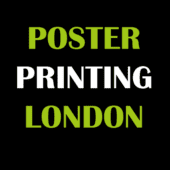Creating a poster in Photoshop can be a rewarding experience that allows you to showcase your creativity while conveying important information visually. This guide will walk you through the essential steps, from planning your design to executing it in Photoshop, ensuring a professional and effective result.
Step-by-Step Guide to Making a Poster in Photoshop
1. Define Your Purpose and Audience
Before opening Photoshop, it’s crucial to understand the purpose of your poster and who your target audience is. Are you promoting an event, advertising a product, or conveying educational information? Knowing your objective will guide your design choices and content.
2. Gather Materials
Collect all the elements you’ll need for your poster:
- Images and Graphics: High-resolution photos, logos, icons.
- Text Content: Headlines, body text, contact information.
- Fonts: Choose readable fonts that match the theme of your poster.
- Color Scheme: Decide on a color palette that aligns with your message and brand identity.
3. Set Up Your Document
Open Photoshop and create a new document with the following considerations:
- Size and Dimensions: Determine the size based on where the poster will be displayed (e.g., 24×36 inches for large posters).
- Resolution: Set the resolution to at least 300 dpi for print quality.
- Color Mode: Use CMYK for print or RGB for digital displays.
4. Design the Layout
Begin by sketching a rough layout on paper or using a digital mockup. Consider the hierarchy of information:
- Headline: Make it bold and eye-catching.
- Images and Graphics: Place them strategically to support the message.
- Body Text: Ensure it’s readable with appropriate font size and spacing.
- Call to Action: Highlight any critical information like dates, times, or contact details.
5. Create the Background
In Photoshop, start by creating a background layer:
- Use gradients, solid colors, or patterns that complement your design.
- Avoid overly complex backgrounds that can distract from the main content.
6. Add and Arrange Elements
- Images: Use the Place Embedded option to insert images. Resize and position them as needed.
- Text: Use the Text Tool (T) to add headlines, subheadings, and body text. Adjust the font, size, color, and alignment.
- Shapes and Graphics: Use the Shape Tool to add decorative elements or placeholders.
7. Apply Effects and Adjustments
- Layer Styles: Apply effects like shadows, glows, and strokes to enhance visibility and depth.
- Adjustments: Use adjustment layers for brightness, contrast, and color balance to ensure cohesiveness.
8. Review and Refine
Take a step back and review your poster:
- Check for balance and alignment.
- Ensure the text is legible and the message is clear.
- Make any necessary adjustments to improve the overall design.
9. Save and Export
- Save your project in PSD format to retain layers for future edits.
- Export the final version as a high-resolution PDF or JPEG for printing.
Conclusion
Designing a poster in Photoshop involves a combination of creativity and technical skills. By following these steps—defining your purpose, gathering materials, setting up your document, designing the layout, creating the background, adding elements, applying effects, and refining your work—you can create an effective and visually appealing poster. Remember to review your design thoroughly to ensure clarity and impact. With practice, you’ll develop a keen eye for design that will make each subsequent project even better.
